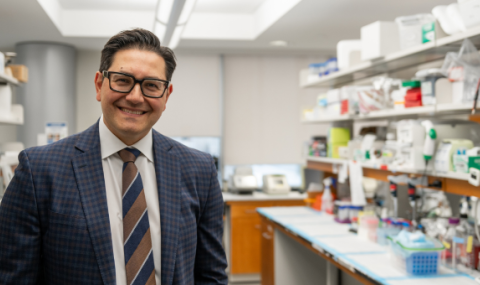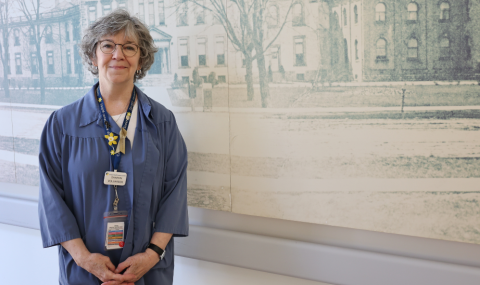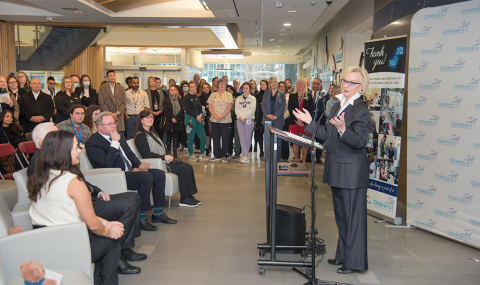LHSC provides a regional program in kidney transplantation, serving a population of 1.7 million. The region extends from Sault St. Marie and Sudbury to Windsor and as far east as Kitchener, Ontario.
"My kidney transplant operation" YouTube video
See more of Brian's experiences on Peritoneal Dialysis:
- "Adjusting after my transplant"
- "My experience with immunosuppressant medication"
- "Post Transplant – I didn’t have to make as many changes as I thought"
- "Transplant and how I deal with the side effects"
Facts about LHSC’s Transplant Program
- Approximately 70 kidney transplants are performed each year at LHSC’s University Hospital. 15-20 of these transplants use living donors.
- A pediatric program is available but is based on patient size, as infants are treated in Toronto.
- More than 1,300 kidney transplants have been performed at LHSC since the program began in 1973.
- The outpatient transplant clinic has 3,000 visits per year, following more than 800 recipients.
There are two types of kidney transplants
- A Living Donor Transplant
- A Deceased Donor Transplant; which uses a kidney from a person who has died suddenly.
Most kidneys come from deceased donors, although the ideal donor is a living donor because of the short time between retrieval and transplant. You can find out more about living kidney donation. Also, watch this 11 minute YouTube video for patients and loved ones, features a donor and recipient talking about living kidney donation.
"I made the decision to be a living donor for my wife" YouTube video
See more of Bryan's experiences on being a living kidney donation:
- "The process of giving my kidney to my wife"
- "Recovering from donating kidney"
- "My advice about being a live donor"
"Our daughter wanted to donate a kidney" YouTube video
"I was scared, at first, to accept our daughter's kidney" YouTube video
"How I coped with my own stress as a family member" YouTube video
"How we coped as a family during our lived donor transplant" YouTube video
"Coping as a family member, post-transplant YouTube video"
"How we coped after the transplant" YouTube video
The Kidney Transplant Operation
Transplant surgery usually takes three to four hours. The patient's own (native) kidneys are usually left in. Typically, they have become smaller in size which allows room for the new kidney.
The new kidney is placed in the lower abdomen where its artery and vein are connected to an artery and vein in the recipient. The ureter from the kidney is inserted into the recipient's bladder.
The recipient remains in hospital for seven or eight days. Education is given about the anti-rejection medications the patient will need to take for the life of the kidney to prevent rejection and how to care for their new kidney.
Quality of life
A successful kidney transplant results in improved health and freedom from dialysis, but transplantation is a treatment option and not a cure for kidney failure.
Of the available treatment options, transplantation offers the best opportunity to be rehabilitated and to lead a normal lifestyle. The average life of a transplant kidney from a living donor is 12-18 years and from a deceased donor 8-12 years.
Dr. Blake on Kidney Transplantation YouTube video
Patient Handbook
You may want to read this handbook about kidney transplantation (PDF).
Please visit LHSC’s kidney transplant program’s site for further information.


